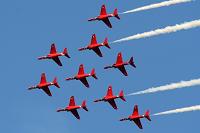Guidance and Control for Groups of Unmanned Aerial Vehicles

Supervisor(s): Dr W Naeem
Inexpensive fixed wing unmanned aerial vehicles (UAVs) have considerable potential for use in remote sensing operations. They are cheaper and more versatile than manned vehicles, and are ideally suited for dangerous, long and/or monotonous missions that would be inadvisable or impossible for a human pilot. Groups of UAVs are of special interest due to their abilities to coordinate simultaneous coverage of large areas, or co-operate to achieve common goals. Specific applications under consideration for groups of co-operating UAVs are border patrol, search and rescue, surveillance, mapping and environmental monitoring. In these applications, the group of UAVs becomes a mobile sensor network, and must be capable of aircraft-to-aircraft communication, navigation, automatic flight control (autopilot) and collision avoidance.
The fixed-wing UAV Aerosonde will be employed as a reference platform. A freely-available, high-fidelity, six degrees-of-freedom model of the Aerosonde’s flight dynamics will support simulation of the aircraft motion, coupled with the flight simulator package FlightGear for visual output. A unique component of the project will be the use of a realistic representation of the communication network formed by the co-operating UAVs not only to co-simulate aircraft motion and communication channels, but – above all – to inform integrated co-design. To date co-operative control algorithms for UAVs have been designed without regard to their associated communication needs or effects.
